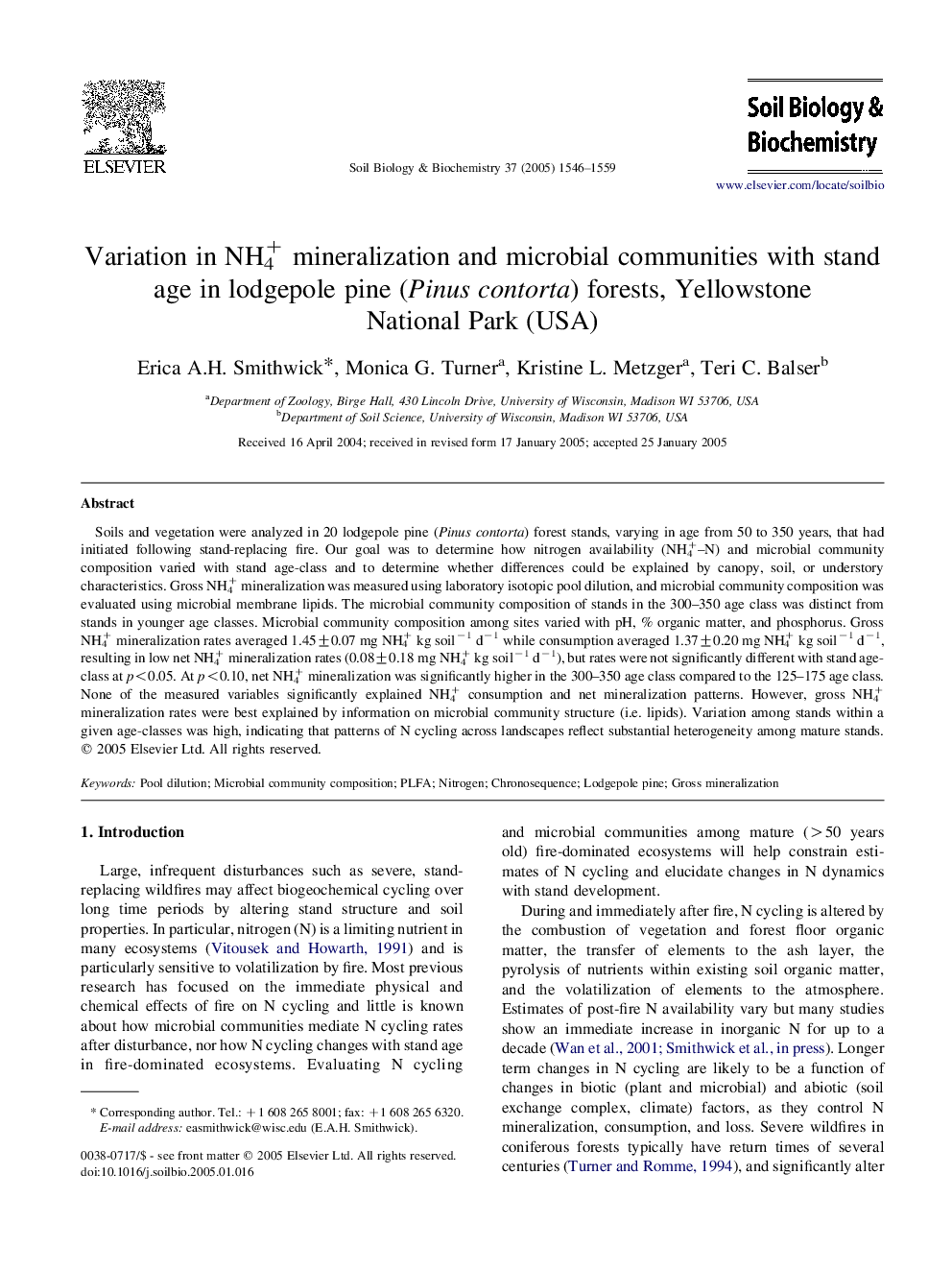| Article ID | Journal | Published Year | Pages | File Type |
|---|---|---|---|---|
| 10846241 | Soil Biology and Biochemistry | 2005 | 14 Pages |
Abstract
Soils and vegetation were analyzed in 20 lodgepole pine (Pinus contorta) forest stands, varying in age from 50 to 350 years, that had initiated following stand-replacing fire. Our goal was to determine how nitrogen availability (NH4+-N) and microbial community composition varied with stand age-class and to determine whether differences could be explained by canopy, soil, or understory characteristics. Gross NH4+ mineralization was measured using laboratory isotopic pool dilution, and microbial community composition was evaluated using microbial membrane lipids. The microbial community composition of stands in the 300-350 age class was distinct from stands in younger age classes. Microbial community composition among sites varied with pH, % organic matter, and phosphorus. Gross NH4+ mineralization rates averaged 1.45±0.07 mg NH4+ kg soilâ1 dâ1 while consumption averaged 1.37±0.20 mg NH4+ kg soilâ1 dâ1, resulting in low net NH4+ mineralization rates (0.08±0.18 mg NH4+ kg soilâ1 dâ1), but rates were not significantly different with stand age-class at p<0.05. At p<0.10, net NH4+ mineralization was significantly higher in the 300-350 age class compared to the 125-175 age class. None of the measured variables significantly explained NH4+ consumption and net mineralization patterns. However, gross NH4+ mineralization rates were best explained by information on microbial community structure (i.e. lipids). Variation among stands within a given age-classes was high, indicating that patterns of N cycling across landscapes reflect substantial heterogeneity among mature stands.
Keywords
Related Topics
Life Sciences
Agricultural and Biological Sciences
Soil Science
Authors
Erica A.H. Smithwick, Monica G. Turner, Kristine L. Metzger, Teri C. Balser,
